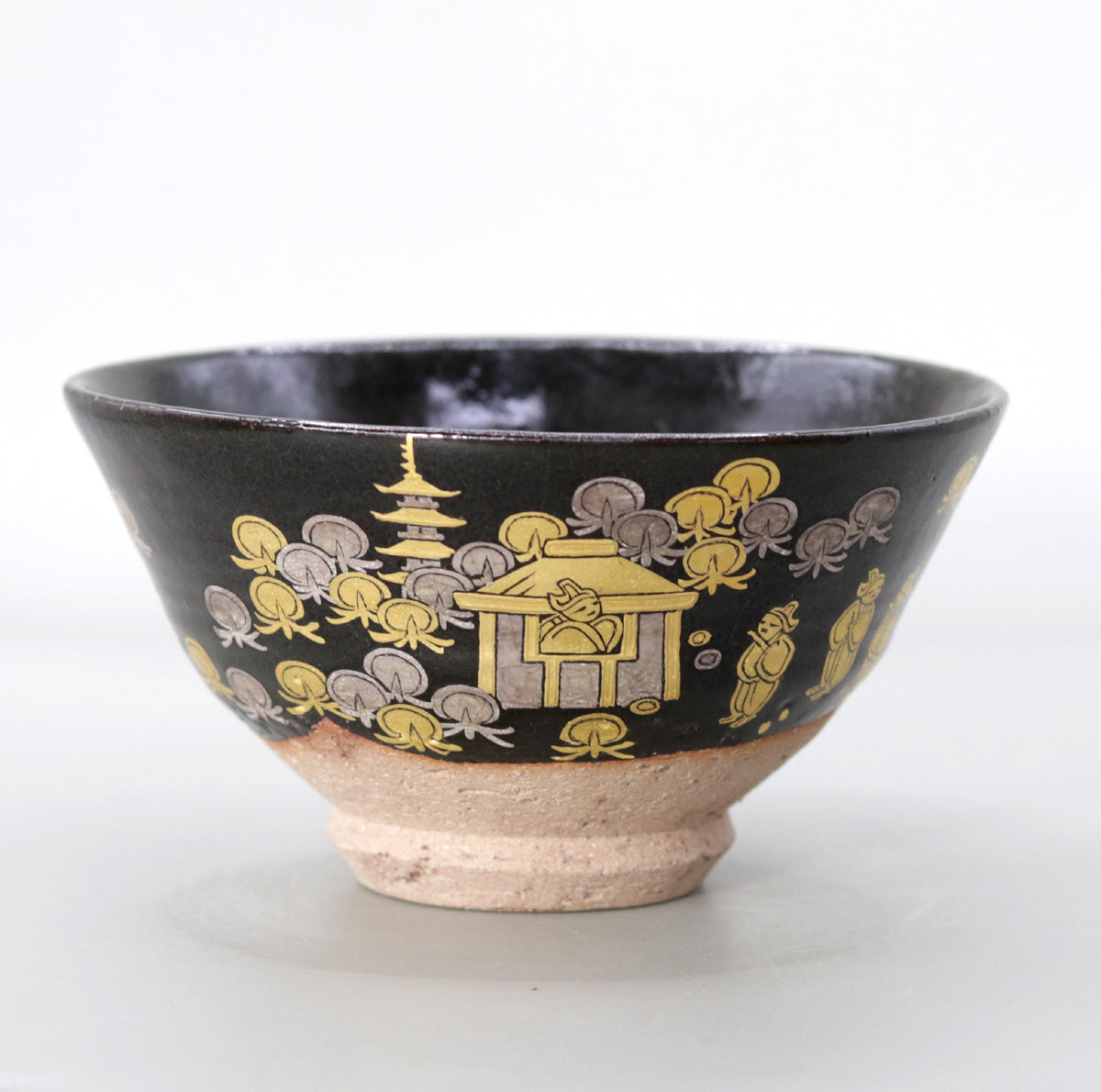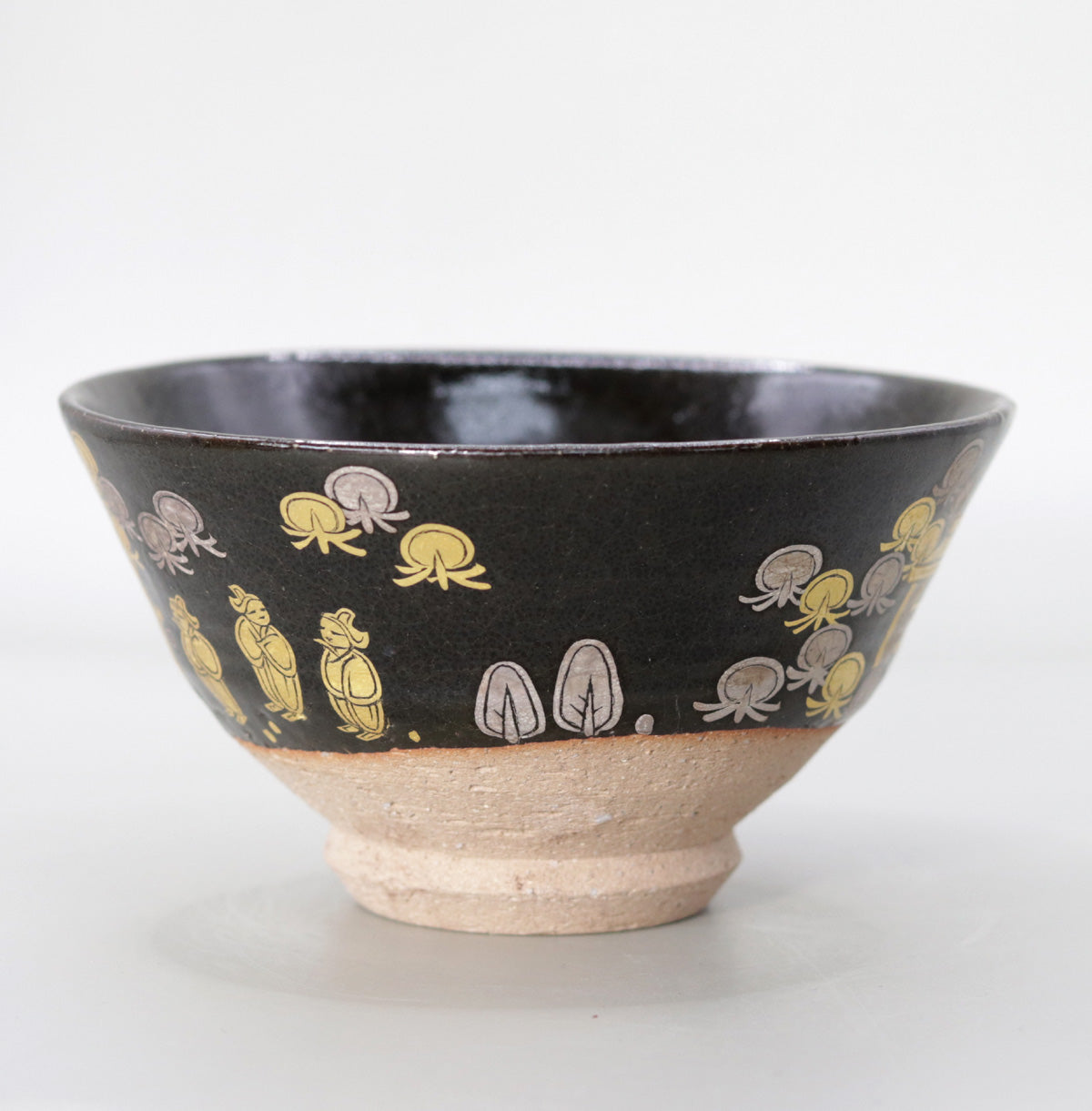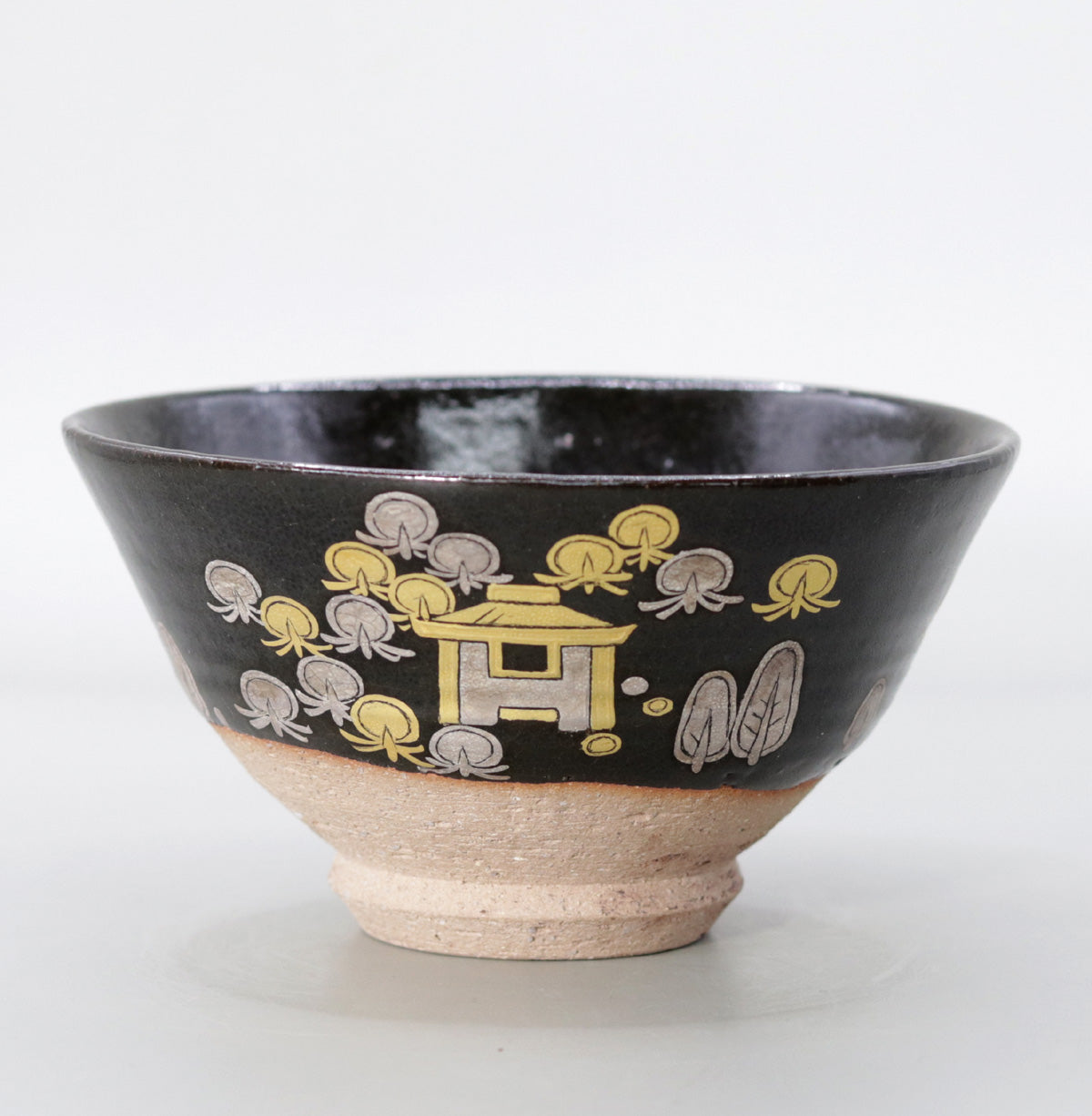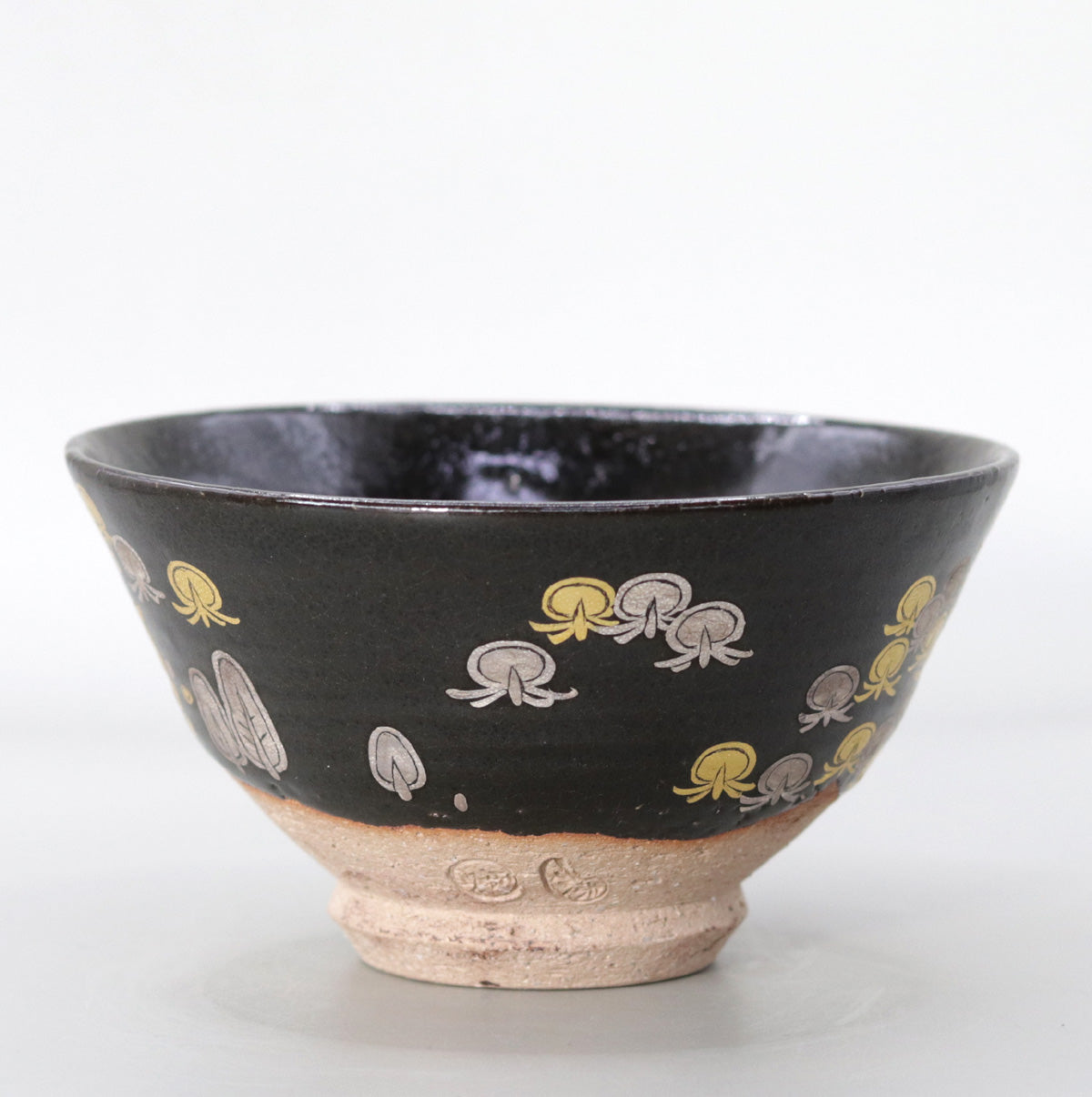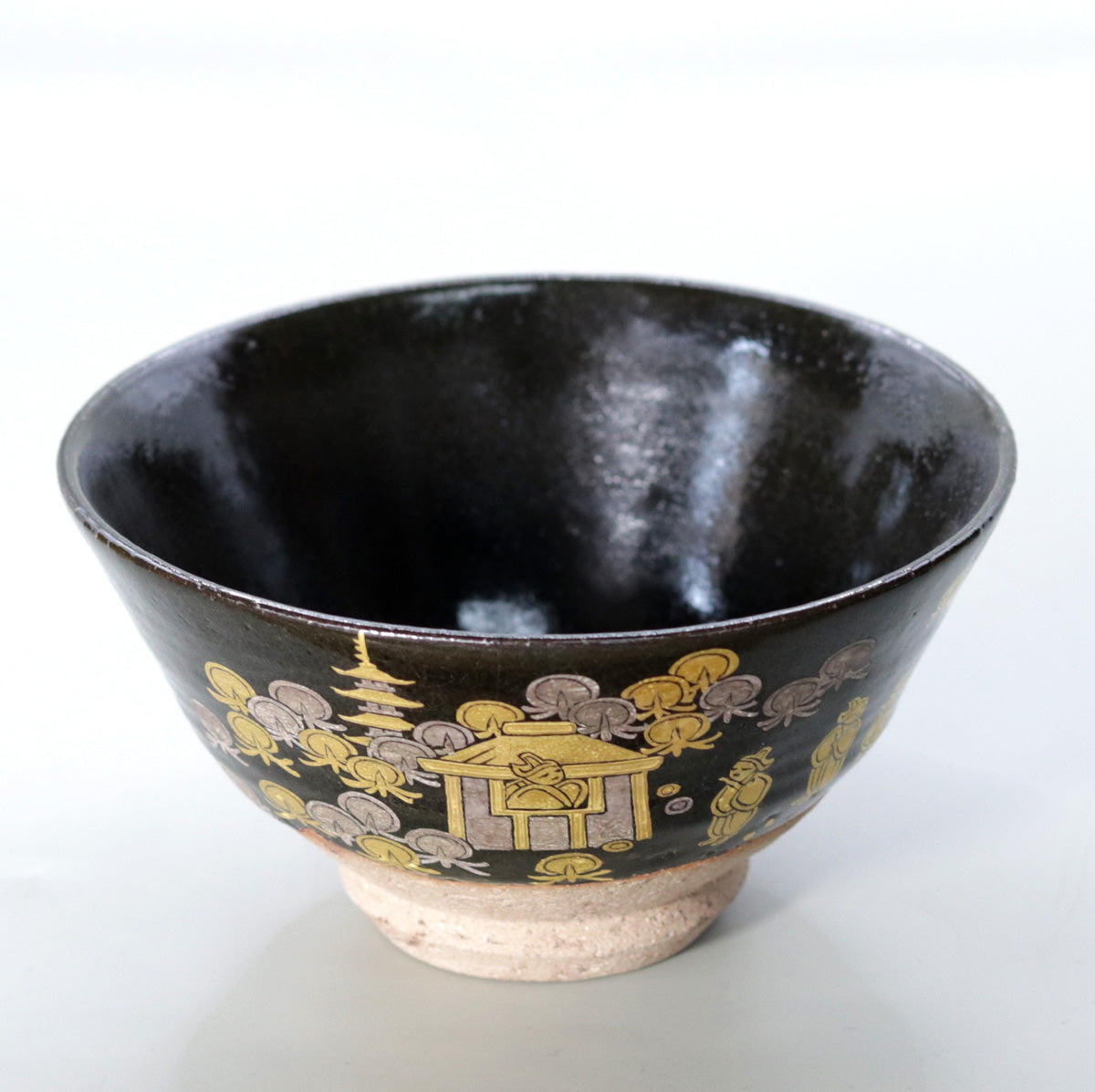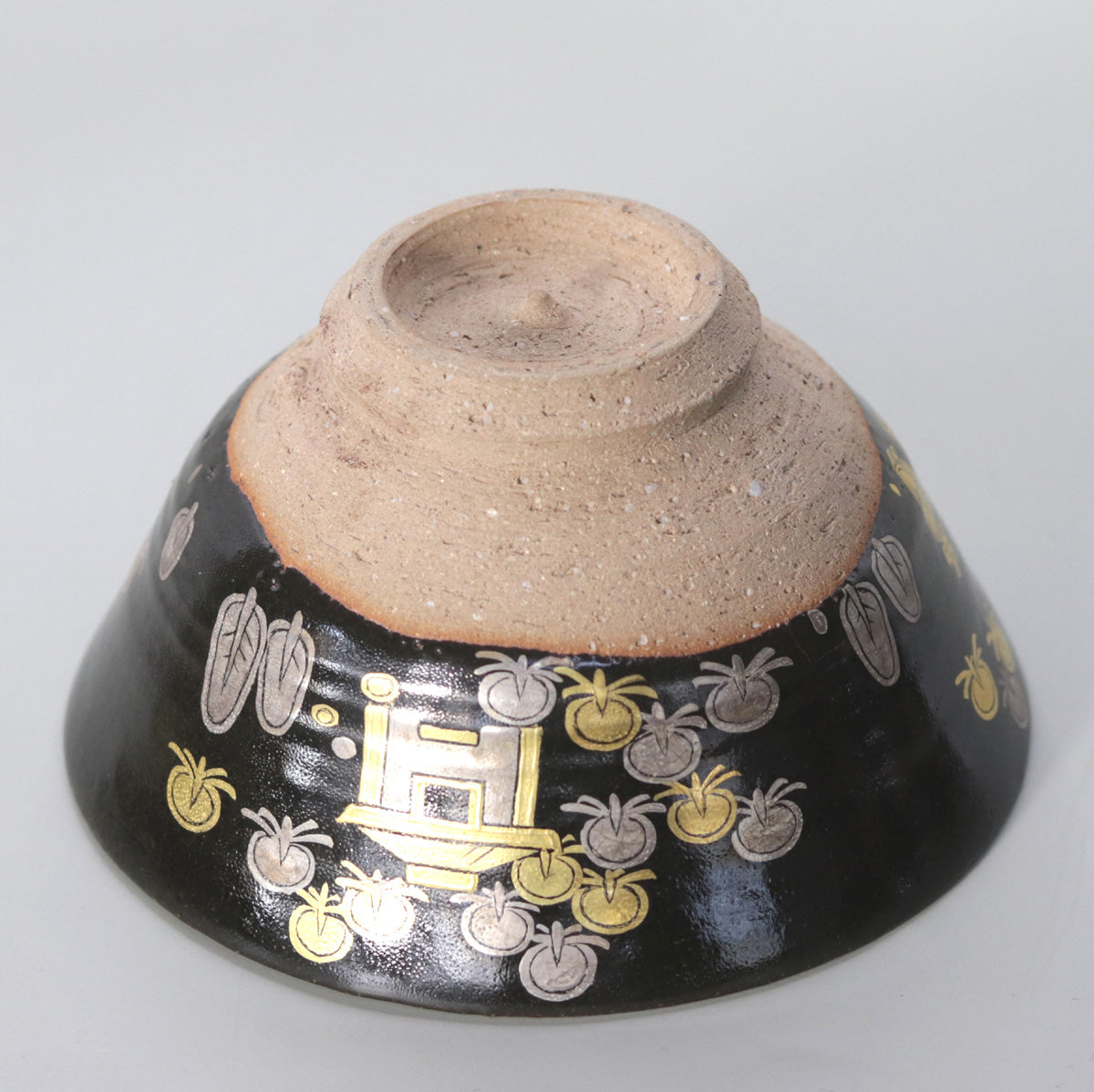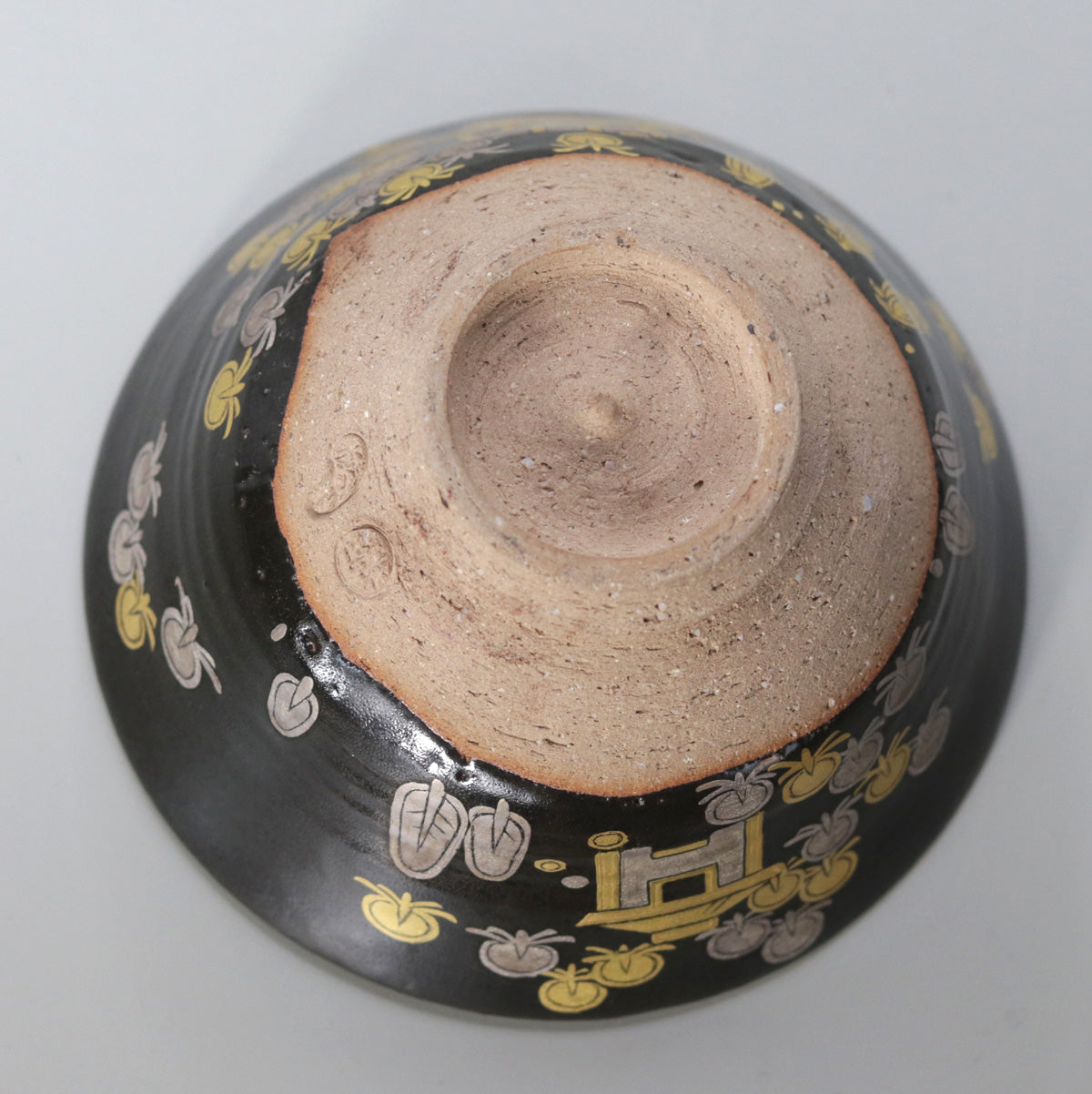Iron-glazed gold-painted Nara-e tea bowl by Rakusai Onishi
Iron-glazed gold-painted Nara-e tea bowl by Rakusai Onishi
Couldn't load pickup availability
Width: 13.5cm Height: 7.2cm
This piece, with its deep iron glaze like black lacquer and the vivid Nara painting of gold and platinum, embodies the intersection of "wabi and miyabi" that is unique to Onishi Rakusai. The gold color floating on the glaze surface, reminiscent of the darkness of night, is particularly gorgeous under the light of the lamp, bringing both tranquility and a sense of storytelling to the tea ceremony. Below, we will explain it from five perspectives.
1. Shape and clay
Neat bowl shape <br data-start="227" data-end="230">The bowl shape, with a slightly taut body and tight rim, makes it easy to create an even foam for the matcha and makes it easy to handle.
Treatment of the rough clay base and foot <br data-start="293" data-end="296">The foot is left bisque and the iron glaze is cut halfway through, creating a striking contrast between the paleness of the clay surface and the black luster of the glaze surface. The wheel marks and stone ridges that remain after carving are reminiscent of the strength of Momoyama pottery.
2. Glaze tone and texture
Deep Black Iron Glaze <br data-start="417" data-end="420">By firing the iron glaze, which contains a lot of iron oxide, in a slightly reducing manner, a faint metallic glow is brought into the jet black, and in combination with the gold leaf, an effect is created that is reminiscent of lacquerware maki-e.
Scenery of glaze cutting <br data-start="505" data-end="508">The glaze is intentionally cut with the waist, and the edges of the glaze scorch during firing, creating an amber-colored "fire gap." Combined with the charcoal marks, this can be seen as a natural line drawn by the flames.
3. Nara Eizo - A picture scroll of the ancient capital floating in the dark night
Five-story pagoda and temple hall <br data-start="632" data-end="635">The five-story pagoda and temple hall are painted in gold on the front, symbolizing the ancient shrines and temples of Nara. The pagoda's multi-tiered structure is depicted with lines of varying thickness to create a three-dimensional effect, and noble figures are placed inside the temple hall, exuding the elegance of imperial culture.
Ginkgo Leaves and the Procession <br data-start="740" data-end="743">The yellow and platinum motif that decorates the surrounding area is a stylized ginkgo leaf. The yellow ginkgo leaves that cover the Nara region in autumn are mirrored, and the figures in the procession blend into the leaves, making the entire vessel into a "metaphorical folding screen."
4. Technique: Gold and platinum lacquer
Carved Line Painting <br data-start="876" data-end="879">We use a technique called "carved line gold painting," in which thin lines are engraved into the black surface after firing the iron glaze, and gold and platinum mud is embedded into the lines. The carved grooves bite into the glaze surface, making the coloring less likely to peel off and more durable.
Twice baked
The gold and silver color is fixed at 730-780°C, and then the piece is fired again at a lower temperature to tone down the luster and adjust the glow to a softer tone that matches the light at a tea ceremony.
5. Functional beauty at the tea ceremony
Contrast with Matcha <br data-start="1068" data-end="1071">The inside is also glazed black, allowing the jade green of the matcha to stand out. The gold leaf border tightens the brown surface, creating the effect of a full moon floating in the night sky.
Expanding the storytelling <br data-start="1150" data-end="1153">As the scenery changes each time the vessel is passed around, from pagoda to hall to procession, the host can add stories such as "Autumn in Nara" or "Yellow Ginkgo Leaves and the Lantern Festival."
The jet black of the iron glaze, the brilliance of the gold leaf, the narrative quality of Narae painting, and the wabi (traditional Japanese style) of the rough earth - this work blends all of these elements together, as if sealing the "ancient capital at night" in a single bowl. If placed at a tea ceremony, guests will be able to take a break while gazing at the golden tower sparkling in the black night sky, and feel the quiet autumn breeze. Onishi Rakusai's iron glaze gold leaf Narae painting tea bowl is a gem of a piece that speaks to its purpose, and simultaneously satisfies wabi (traditional Japanese style) and elegance.
Share


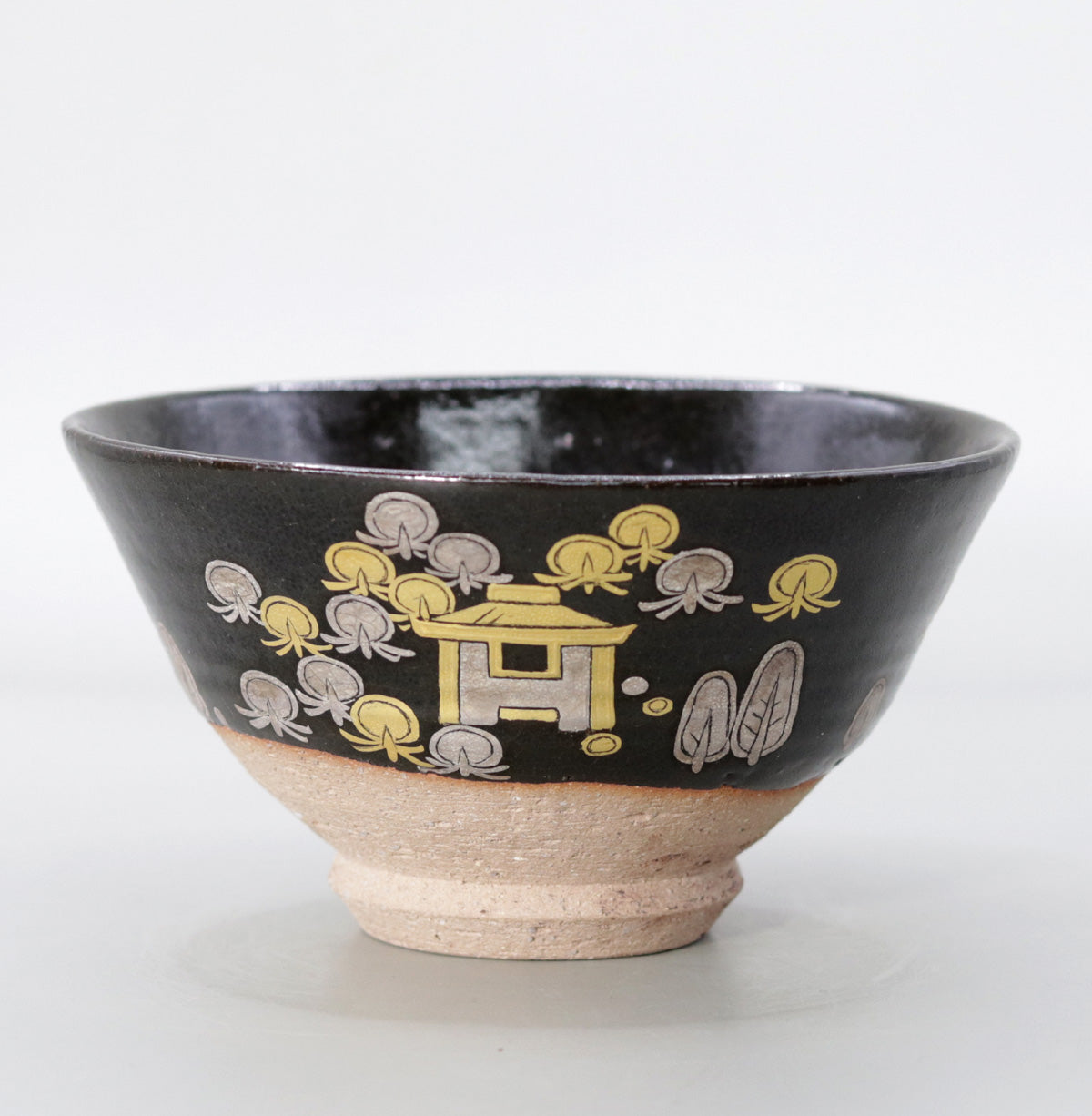
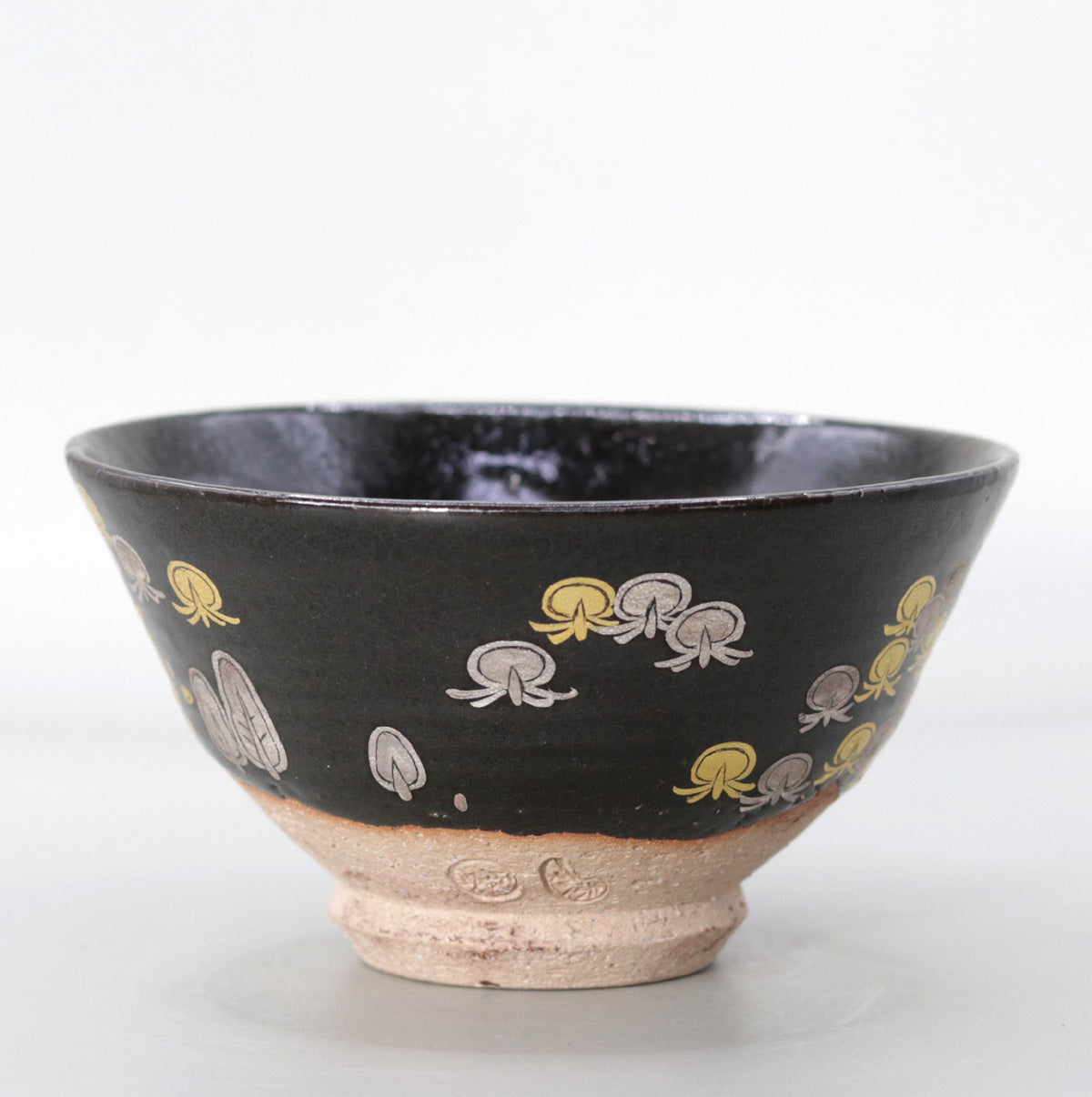
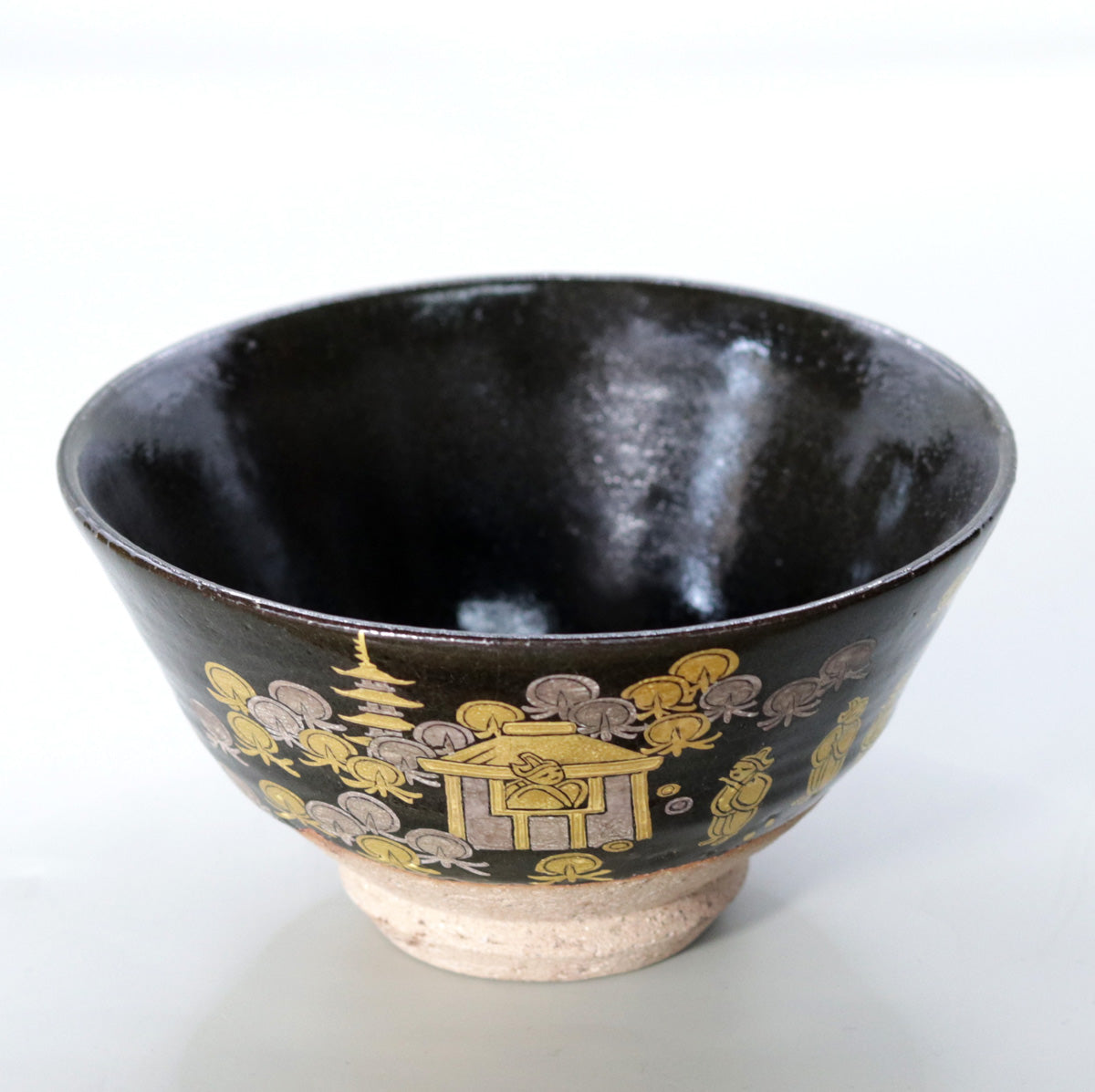
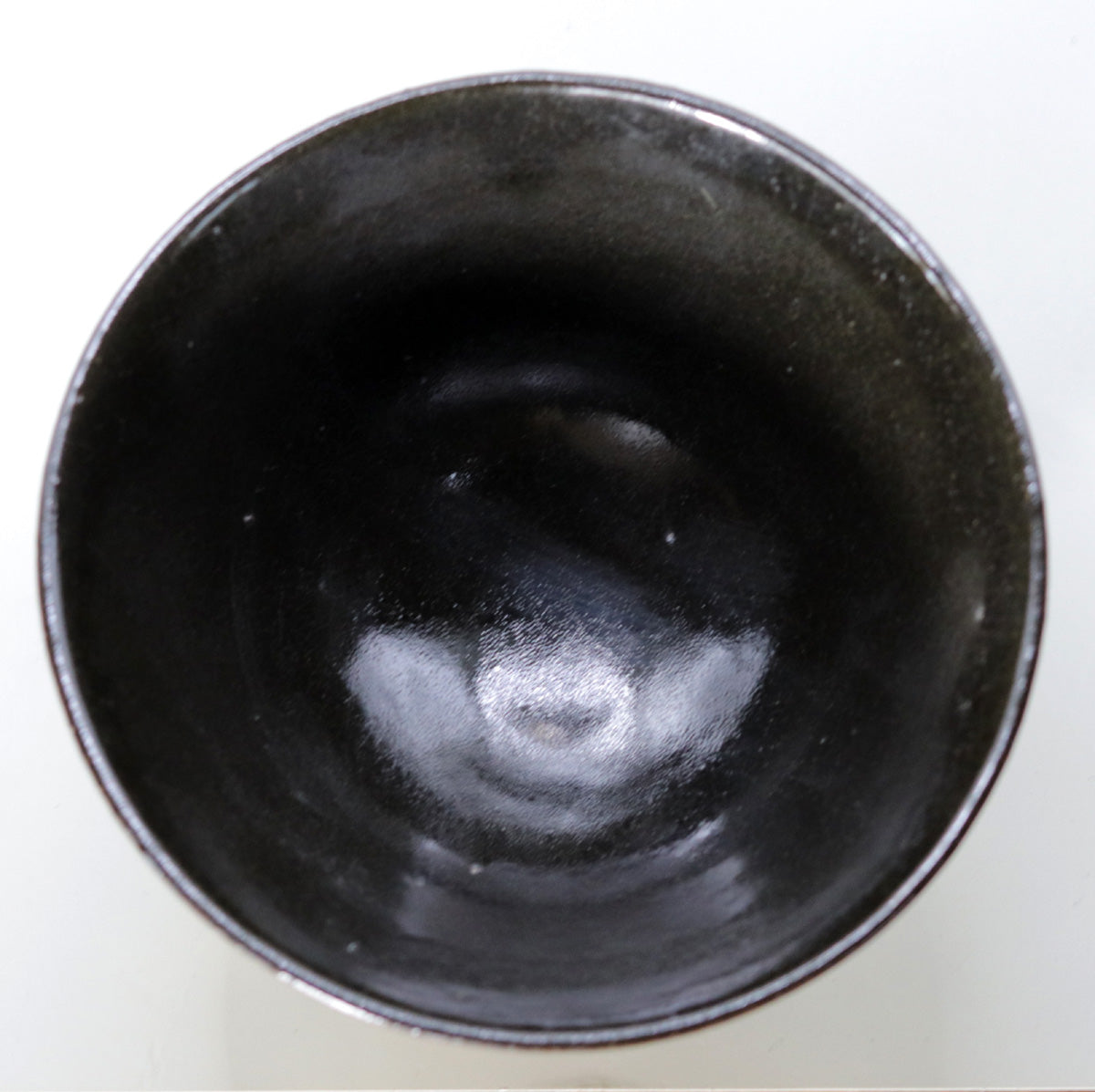
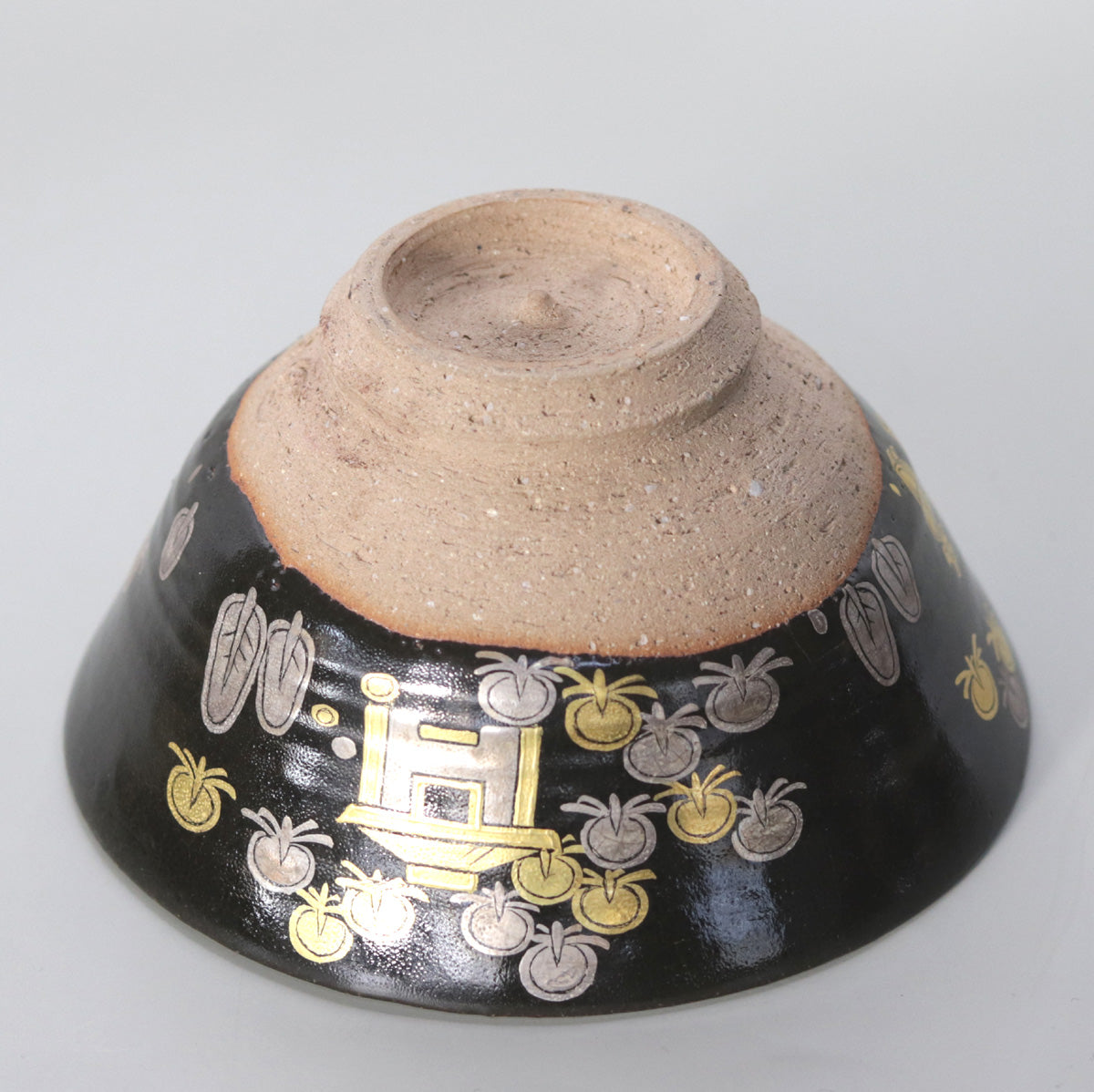
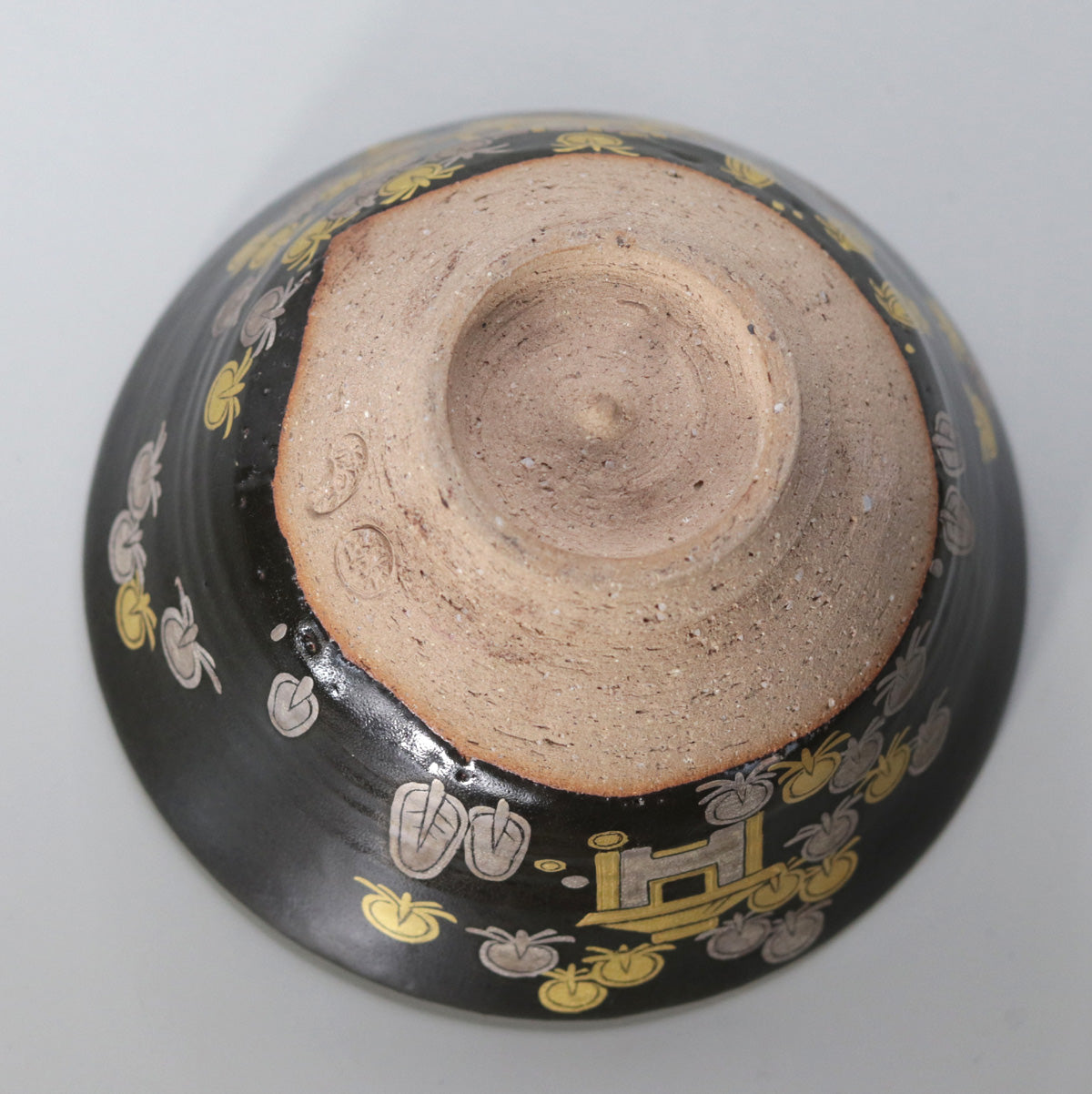
Multi-Column
-
[I will send it to you quickly and carefully]
We carefully package each product in a way that suits it best.
Also, delivery times vary depending on the piece (vessel, etc.).
Items that already come with a box will be shipped within 1-3 days of the order date.
For items that require a box to be made after your order, it will take approximately 30 days for production to be completed and then shipped.
In either case, once we have confirmed your order, we will contact you by email to inform you of the delivery date.
-
[Requests when purchasing pottery]
Even products that look the same may differ slightly in color, shape, size, etc.
The way the glaze is used, the power of the kiln, the firing method, the season, and the humidity also affect the appearance of the pottery.
Please understand the individuality of each piece of pottery and enjoy the unique warmth of handmade.

